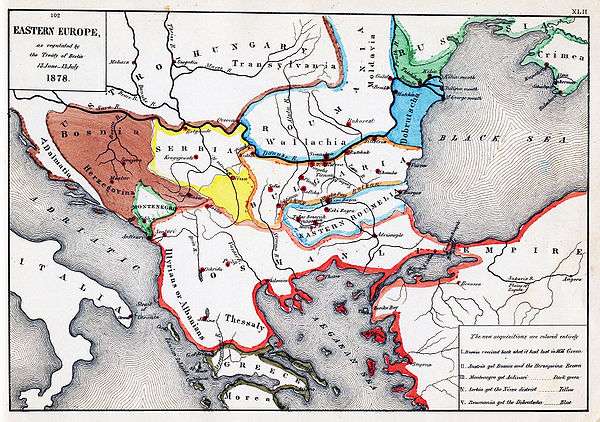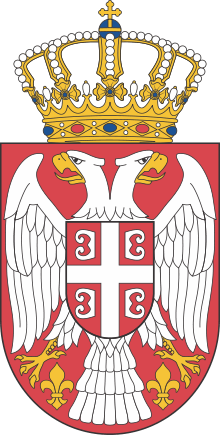Austria–Serbia relations
 |
|
Austria |
Serbia |
|---|---|
Austrian-Serbian relations are foreign relations between Austria and Serbia and their predecessor states. Austria has an embassy in Belgrade. Serbia has an embassy in Vienna and a general consulate in Salzburg.
History

The history of relations between the two countries goes back to the Great Turkish War, Habsburg-occupied Serbia (1686–91) and Great Serb Migrations (formation of Military Frontier and building of Petrovaradin Fortress), to the era when the Kingdom of Serbia (1718–1739) had been a province of the Habsburg Monarchy, and the last Austro-Turkish War (1787–91) at the time of Habsburg-occupied Serbia (1788–92).
Foreign relations, as such, date from the proclamation of the Austrian Empire in 1804 and the formation in 1817 of the Principality of Serbia, an autonomous state within the Ottoman Empire. The Habsburg recognized the independence of Serbia and established diplomatic relations in 1874, supported by the Treaty of Berlin (1878).
The history of relations between the two states was dominated by tension over Serbian ethnic irredentist claims on the regions, such as the Vojvodina, and Bosnia and Herzegovina, as well as Serbian sympathy for other South Slav minorities in the Habsburg Empire, combined with Austrian (and Hungarian) fears of pan-Slavism and Russian influence. Hungarian suppression of Serbian revolts during the 1848 Revolutions were not opposed by the Habsburg rulers. Serbian claims were not recognized by Hungary was eventually placated with the Austro-Hungarian Compromise of 1867, further angering Serbian nationalists. One notable flare-up between the two countries was the 1906-1909 economic conflict known as the Pig War which occurred simultaneously with the diplomatic and military crisis over the Austrian annexation of Bosnia. Ultimately, the tensions between the two countries could not withstand the strain of Assassination of Archduke Franz Ferdinand of Austria by Bosnian Serbs in 1914. Following the July Crisis, Austria invaded Serbia to punish it for supposedly supporting the assassins.
The resulting war eventually destroyed the Austro-Hungarian Empire, leaving a shrunken First Austrian Republic as a rump state. Serbia annexed much of the former Austrian holdings in the Balkans to become the Kingdom of Serbs, Croats and Slovenes, later the Kingdom of Yugoslavia. Austria was eventually annexed by Germany, ending its separate foreign relations.
Following the restoration of Austrian independence by the Austrian State Treaty in 1955, Austria became officially neutral in the emerging Cold War.
Population
There are between 200,000 and 300,000 people of Serbian descent living in Austria.[1] The Serbs are either the largest or second-largest foreign population in Austria, although they are much less visible than the similarly-sized Turkish minority.
See also
References
External links
- Austrian Foreign Ministry: list of bilateral treaties with Serbia (in German only)
- Austrian embassy in Belgrade (in German and Serbian only)
- Serbian Ministry of Foreign Affairs about relations with Austria
- Serbian embassy in Vienna (in German and Serbian only)
- Serbian general consulate in Salzburg (in German and Serbian only)

